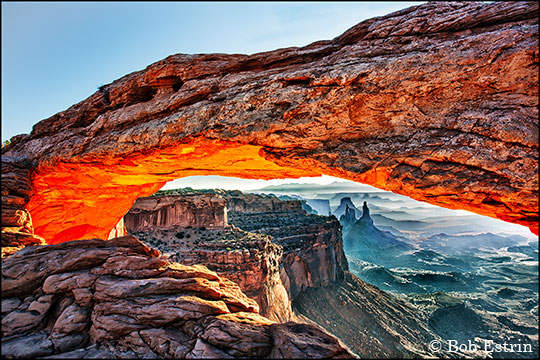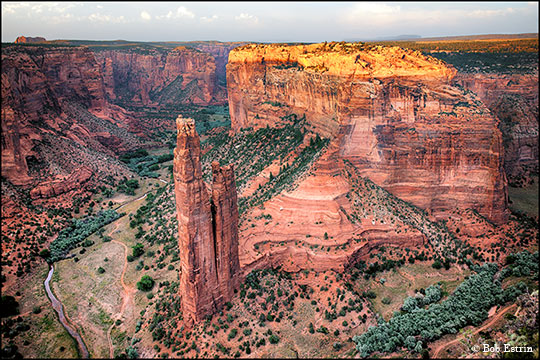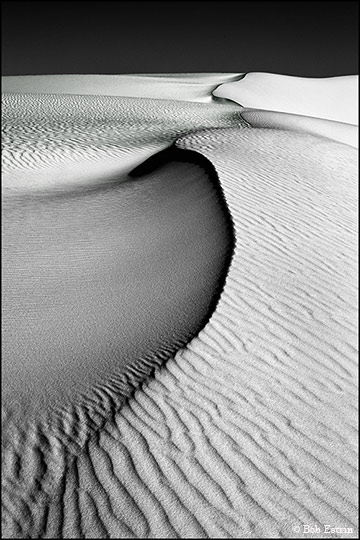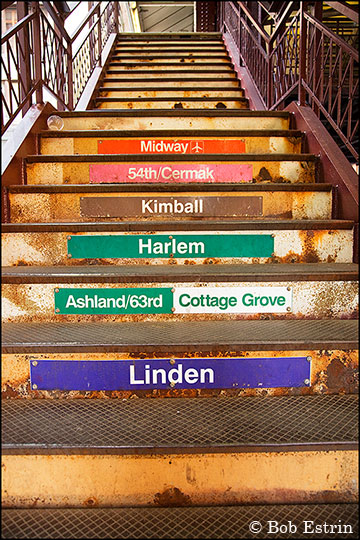Art Show Magazines:
Sunshine artist – www.sunshineartist.com
This magazine is the main magazine used by professional outdoor art show artist and includes show location information as well as articles of interest to the art show artist.
Professional Artist Magazine – www.professionalartistmag.com
This magazine is for professional artists with good art business articles but geared mostly for painters.
Submitting to art shows:
Each art show’s application is a little different. For most applications, you will be asked to send in contact information, art medium description, website, and State business license number as well as samples of your work. Many applications contain rules for the show and you need to read the rules and sign the application. It is best to read the application carefully and give them all the applicable information they have requested and digital files in the requested format and size. You do not want to give someone at the show a reason to disqualify you over a technical issue or missing information.
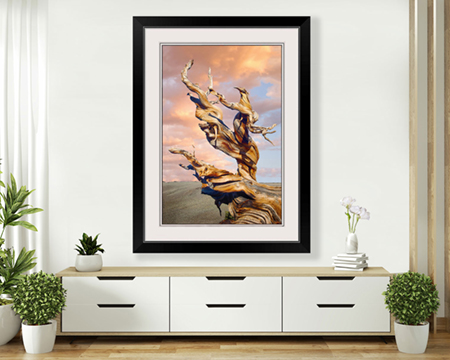
It is best to send in your application early if possible and consider the application deadline the date the art show wants to receive your application by. If it says, the application must be postmarked by a specific date, then send before that date.
Some local non-juried art shows may just accept the artist as they review them when the application is received. They may get full before the application deadline so there could be an advantage to applying earlier. At your smaller local art shows, if you missed the deadline send them an email or give them a call. They may have unfilled spaces available and accept you.
Some small local art events or shows do not have an application or jury fee and just a fee to participate in the event once selected. Most art shows that are bigger or have a jury select the artist will have a small application fee associated with it. If you do not get into a show, you do not get this application fee back. Once accepted, they ask you to send in your art show fee by a specific deadline. You do want to send in your art show payment before the deadline. Some art shows have an artist waiting list that they may give your booth space away to for non or late payment.
Some smaller local juried have no application fee but ask you to send in a check for the art show amount with the initial application. If you do not get into the art show, then they just destroy your check. If you do get in the show, they cash your check.
You can mark in your calendar which shows you applied for on the show date and then change the calendar message that you have been accepted or not when notified. I also mark down the acceptance notification dates for each show in my calendar. If not notified, I would wait a week or so after the notification date and then contact the show to check if you were accepted.
Keep track of the shows you have done in the past, especially the ones you have done well in. If you do not receive an automatic application the next year, contact them or visit their website to get the application.
Sometimes when you do not get in, it has more to do with too many artists applying in your same art medium and not always about your art quality. Many times, the jury will change each year for a particular art show and have their preferences on the type of art they like. Another reason you may not get accepted even after participating in the art show in previous years is that the jury may want to give some variety to the art show and let some new people in. Not being accepted can be hard if you have been accepted to this show before. Try to not take this personally, if you do not get in, as this is part of the art show market. Even with the same jury images, you may get in one year and not in another to the same art show.
When selecting new art shows to apply to, it is difficult to tell how a particular art show will be in sales for you. One option is to just visit and walk the art show one year and check out the number of visitors, the number of booths in your same art medium, and how your artwork compares in quality.
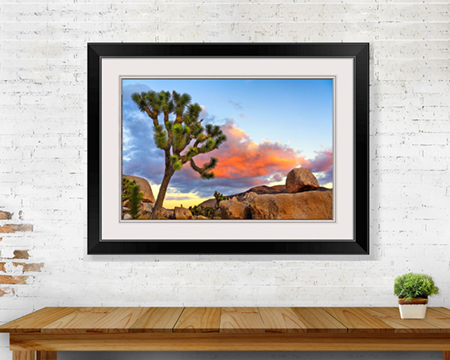
I also look for customers carrying art around that they bought at the art show. You need to determine if this is an event people go to just look for the free entertainment or buy at. Many times, you need to do a specific art show once or twice to see how well you do and if it is worth doing again.
An important general rule is that if an art show is harder to get into due to the competition of numerous artists applying every year way over the number of spaces available, this can indicate that this art show has much better sales.
For the smaller local shows, you usually have a good chance of getting in. These shows usually have no application fee or a small application fee and less expensive art show fees such as $20 – $65 for a day or slightly more for a two-day show.
Some art shows, although less common, have a smaller art show fee but charge you 12 – 20% of all your sales. When these types of shows ring up all the artist sales at their register, they will absorb the credit card fees as well as send in the State and local sales tax that they collect from the customer for you. The artist is still required to claim the income for taxing purposes.
For the larger shows, even ones locally that have many professional artists from other States can be much more difficult to get into, especially for the first time. The application fee will be larger and the art show fees may be up to $550.00 for a three-day show but will bring a much larger and qualified crowd. The process of selecting the right images for the jury and the quality of your booth shot is much more complicated for the larger shows than for the small local shows that this article is about.
How I determine which art pieces to show:
For my photography, I produce more pieces than I can show. Because of this, I try to reduce the number of even finished pieces down to what I think is just my best work. To do this, I place new photographs on Flickr and see what the viewer’s response is. I also ask my friends which ones they like to reduce my selections even more. Eventually, these selected new images are displayed in my booth to be seen by the customer. In the end, the customers select which prints will be popular. The images that do not get as much a positive response or sales as the others get moved to the back of the print bin. These prints are eventually removed and replaced with new images. The most popular selling images have a long life and the remaining prints end up in storage. I usually remove the old print and replace it with a new print image allowing me to reuse the mat. By adding a new Clear Bag, the image presentation looks new.
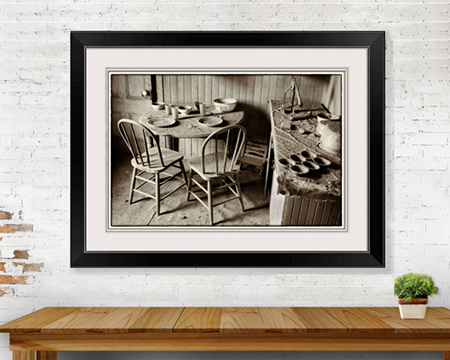
With some other art medium that is not reproducible as photography, you should display all your art pieces since so much time might have been put into their production. In this case, I would rotate the artwork you have at different shows since it may not fit all in your booth at once. If a show has a particular theme or location associated with it, you may want to bring artwork that best matches the customers that may come to that event.
Sometimes it is difficult for the artist to tell what will be popular with the public. The artist is sometimes more emotionally attached to a particular piece due to a related experience during creation. The customer will see the artwork based on their own experience and emotional response. I do not show any artwork that I am not happy with, but when selling art, with limited wall space, you need to display the artwork that has a history of selling on your display booth walls. I leave some of my more personal pieces for art exhibits or the print rack.
Now after I said that I would like to point out that I see some artists fill the majority of their wall space with the same art pieces for 3, 4, or more years in the same general area or at the same art shows. For me, this could give the customer the feeling that the artist is no longer producing new work or perhaps feel that they can pass by this artist booth since they may have nothing new. I suppose that this is a personal decision that needs to be made by the artist.
I reserve my limited wall space to images that will draw attention to my booth and have customers stop and look longer instead of just walking by. Sometimes these images are not the best sellers but do draw the customer’s attention. Your walls should include artwork that has been sold in the past. I also hang a few newer pieces so that visitors that attend my exhibits repeatedly see that I am still producing new work.
Most of the art displayed in your booth will be in your standard or most popular sizes. For photographers, I suggest that you have at least one larger framed or canvas photograph to give the customer the idea that you can print larger sizes. Let your customers know that you can print any of your images in larger sizes since it is not always obvious that you offer this customized service.
Who are the buying customers?
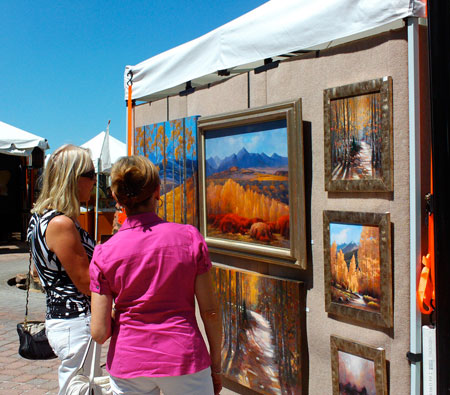
One thing I picked up is that people who are on vacation or traveling seem to be more likely to purchase art. They like to bring back something to remember their trip or purchase artwork in a style not available where they live.
If you are selling in a tourist area or area in which tourists visit, you will have more sales on average than one with just locals visiting. When people travel, they seem to be more in a buying mood. Perhaps they are just having fun with an impulse buy or feel that they cannot always come back later to purchase the item.
Travelers are concerned with how to get art purchases back with not only smaller pieces that will fit in their suitcase but larger art purchases. Customers are always looking for excuses for not purchasing at this time and it is the artist’s job to offer solutions.
In this case, if the customer does not know how to get the art back home, offer to ship it to them at your cost or a reasonable rate. For the majority of the artist, you do not need to add sales tax if shipping across State lines which can make the shipping option affordable to the customer. It does not hurt to also put a sign on your table or wall that states that shipping is available.
Younger people are more likely to purchase items under 20 or 50 dollars. Seniors who may have downsized their homes or already have their wall space filled with art are less likely to buy. With this in mind, I still treat every customer the same. Many people in Arizona come for the winter and are in smaller homes with little wall space but will buy art to bring home with them. I have found that selling art in more wealthy areas can also increase art sales but does not guarantee better sales or the ability to raise your prices for these locations.
My average buyer is between 30 and 55 years old and both men and women evenly. With artwork that hangs on the wall, it is sometimes a harder sell since both husband and wife need to approve and their tastes are not always the same. With items geared more to one sex or small enough to store in a drawer such as jewelry, you do not have this problem as much.
Selling matted prints:
I sometimes print new images in smaller sizes, mat them and place them in the print rack. I then see what the customer response is. If a specific art piece gets a good response or sells in a smaller size, I then print that image up in a larger size.
You do not want to make 2 or 10 of the same images and size with the idea that if you sell the one you have a replacement so you do not run out. Start with one or one of the same images in two sizes to see if it is popular with the customers. If you have a selected group of photographs that sell more often, then I would have a spare replacement print for just those images. For the full-time-traveling artist, you need to have more duplicate prints.
If the customer is looking for a smaller or larger print of a photograph they see, let them know you can custom print it for them and mail them the print. In this situation, I charge a reasonable shipping cost. Many people traveling do not want to carry larger artwork with them. If they live out of State and you mail it to them, you most likely do not need to charge sales tax which makes up for the additional shipping costs. You just cannot keep every image in stock of all sizes. The availability to print on demand and this mailing option is how I handle this. Larger prints can be rolled up in a tube for mailing and do not need to be mailed flat.
On special orders sometimes custom packing and mailing can be time-consuming and expensive for larger flat prints. If the customer is local, I find it more convenient to make an appointment and just drop it off at their house. The customers do not seem to mind and still pay a delivery fee that is equivalent to or less than any shipping costs.
How many different sizes for matted prints: The general rule is that you do not want the sizes to be too close to each other or the customer will most likely select the lower cost smaller size. For photography, the size usually refers to the outside mat size and not the print image size. Popular mat sizes are 8×10, 11×14 and 16×20 or 18×24 and larger. If you sell note cards, you may not sell many 8×10 matted prints since the note cards are cheaper and may be close in size.
If a customer wants to only purchase the larger matted print they see in a frame. I am happy to remove the frame and sell them the matted print only. Many customers know they can frame it themselves at a lower cost or they may prefer another frame color or style. Take the money for the sale and then let the customer know to come back a little later and you will have the matted print ready for them to pick up. It helps to have a few Clear Bags of various sizes for this purpose since most shopping bags are not designed or will fit large flat art items.
I see many artists display matted prints in a print rack or other container and have many of them on their side so the image is not upright. Many artists seem to be OK with this and even if they notice it does not correct the situation even when the container will fit the prints in both directions. I feel it is always better for the customer to see the artwork as it would be displayed on a wall. For some reason, this bothers me since I have never been to a gallery and seen work displayed on its side. I recommend as part of your final setup check that you go through your print racks and look for sideways prints.
Sometimes when I exhibit my art in alternate gallery locations such as a coffee house or other business, I may have two different prices on a framed art title card, one price for the artwork framed and a lower price for non-framed. I am in the job of selling art, not frames and I try to be flexible when it comes to trying to meet the customer’s needs and price points.
While most artists sell matted prints with the standard 4-ply matboard backing, some do use 3/8″ foam core as the backing behind a matted print. Foam core is thicker and with the total combined thickness of the top mat, print, and the foam core backing, the matted prints will not fit into many standard frames that the customer may purchase. The ability to not use a frame that the customer bought because the print matting is too thick, could upset the customer and cause them to purchase a more expensive custom frame.
I feel that using foam core backing makes the prints in the print rack seem more high-end for some reason and could be beneficial when just used as a support backing, in a clear bag, to an unmated print or original painting that is not attached to the foam core. Another issue with foam core is that you cannot get as many prints in the print rack since they take up more room.
For matted prints which could include photography or other mediums such as matted watercolors or prints of paintings, I try to keep the outside mat size to standard frame sizes. If they buy a matted print for $70.00, they may be upset if they need to spend another $135.00 on a custom frame at twice the price of a standard frame. A happy customer is more likely to be a repeat customer that might start collecting your art. As a selling feature, I often inform the customers that my mats are a standard size and this gives them the option to purchase a less expensive ready-made frame instead of a custom frame.
General artist information:
If you get a higher-priced custom order or commission such as a painting or photograph at an art show, collect at least 50% at the show and then get the remaining amount before you deliver the finished art to the customer. Except for corporate buyers, I no longer send out the artwork to individuals unless I get the final payment first.
You may be tempted to start on a special customer request for your artwork or print the artwork before you receive the initial 50% deposit if they are sending it to you later, but I suggest you do not. Sometimes customers change their minds and you may be spending money and time on a custom order that has been canceled. I sometimes take the deposit by credit card or Paypal using my website and then request the remainder by check if possible.
The artist should consider providing bags to customers to bring home art purchases. I do not have any shopping type bags since most of the art I sell is matted prints already wrapped in Clear Bags. It could be considered a form of promotion for the customer to carry around your art in a clear bag for other customers at the art show to see. For the artist to purchase custom larger flat bags from a manufacturer would be expensive since you need to purchase in larger numbers and artists generally do not have needs for that quantity of bags.
I have not had any complaints from customers who are usually parked close by and just carry the larger framed or canvas art to their car. Some artists at larger art shows may have some bubble wrap and tape a layer around the artwork. I have also heard of others who buy large clear garbage bags at Home Depot and use them to wrap art. I suppose they fold the extra bag area tight over the art and tape it neatly. If you sell larger prints that are not matted or framed, you could have some extra mailing tubes ready and just place the prints in the tube for the customer.
Gail Peck Says: “Talent is almost the least of it. To consistently sell you have to have images that people can relate to emotionally. Although I’m not the most talented photographer out there, I’ve sold from the very first day because of people like what I do. They care very little about the qualities that most photographers stress over. What you need is a winning personality that can engage well with the buying public. One young man who has wonderful images sells very little because he lacks conversational skills. I can’t stress this enough!!!”
Read more at: Selling art at art festivals
Really informative art show videos and article:
Informative video on selling art at art festivals. While this video is 1 hour 47 minutes long, the incite and information this video offers is worth the investment in time to watch at this link: How to Successfully Sell Pictures at Art Festivals and Fairs
This is a very informative article on how to sell photography at art shows that is geared more to larger professional art shows but has good advice that would also pertain to artist doing smaller local art shows”: How to sell photography at art shows
This is a nice article on how a painter got her start selling her art at art shows and her progression to being a well-seasoned art show participant: Seven Years of Art Festivals – Sharing My Experiences with New and Aspiring Artists
Marketing / Promotion:
It is a fact that art generally does not sell itself. You may find that places that sell your art for you do not do as well as when you are in front of your customers as an artist selling yourself. Part of selling art is the promotion that can be approached from many ways at once.
Promotional Emails or Newsletters:
When at an art show, have an email sign-up list for visitors to fill out. When you have a new art show or any art-related event in that area, send out a simple email blast inviting them. Many artists design and send out regularly a more sophisticated newsletter with this information included in it. Many artists use a reasonably priced bulk email company such as www.icontact.com or www.constantcontact.com to send out these emails. One nice thing about these services is that you can have separate email lists under different titles and you can target only those lists you want for a specific event. Also, the customer can easily unsubscribe from your email list automatically without any extra work on the artist side.
Using postcards:
For my art exhibits, I create postcards or print off 4×6 prints, as shown in the photo, and leave them around in local businesses close to the exhibit. These locations are mainly art or photography related and customers pick them up. The remaining prints are placed at the exhibit as a fancy business card for those attending to take home. I find the 4×6 prints on sale to be cost-effective in smaller quantities versus 500 or 1000 postcards. This can also be done for art shows with the option of mailing them to past customers. Most artist create custom postcards which can be purchased in various sizes and quantity at Vistaprint. They are cost-effective on group shows.
Using Fine Art America to promote your exhibits or art shows:
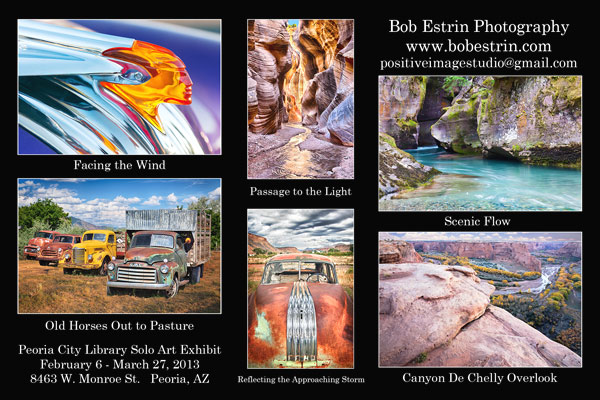
I found signing up with www.fineartamerica.com and entering your event in the event calendar, which is also free, has great benefits and is available on a national level. If your event is selected, they will mention your event such as an art show in their email newsletter to a great number of customers with an art interest. These customers are targeted to the general location of the event along with a link to a web page with additional event detail. I am really surprised that more artists do not take advantage of this free service, but now you know about it and you can with a little effort. Once you spend the initial time to figure out how to enter an event, all your future events will only take about 10 minutes to submit.
General Promotion:
When more serious art collectors see your artwork at different events such as art shows, displaying at galleries, public art events, solo shows, and group shows around your area they may be more likely to purchase some of your art at art shows. I feel all of this promotion adds up to give you more credibility as an artist. I feel collectors would rather buy art from an artist that they feel will be around in 5 to 10 years more than someone they see on and off for a year and then disappears from the art scene.
My theory is that even if you live in a very populated and spread-out area such as I do near Phoenix, AZ, the number of people that visit art shows is much smaller. These people will visit many art shows as something they enjoy doing and not just to look for art to purchase. They will get around and if you do enough shows or other types of public exhibits, even in different areas, they will start to recognize your artwork. It is something like print ads where some customers need to see your product (artwork) numerous times before they make a purchase.
One thing I do is have numerous public art exhibits. While I like to show my newer work mostly, for larger exhibits of my art, I always include a few older classic images that I have shown at shows in the past. I do this so people who may not remember your name may remember one of the older images if they liked it. They will then realize that this is an artist they have seen before and that this is new work from you that they have not seen. This is part of my need to see your work numerous times to get credibility to some collectors who do not like to show their classics.
Banners:
One way to get art show visitors to notice you is to put up a custom banner. Visitors tend to walk by the artist’s tents at a fast pace and something needs to catch their eye to slow down or stop to look in more detail. One thing that can do that is a banner since it is usually in a place that is very viewable from a distance. You can have a banner on the top inside of the back wall or at the top inside of a side wall, at the front of your tent high up as a few examples. I have a 6′ x 3′ vinyl banner that I have even hung from the front of my 6′ table inside my tent.

I recommend vinyl banners with four grommets in the corner, as seen to the right, so you can use rope or bungee cord to place them in your tent area. Many local office supply stores can do banners. You normally need to pick a size and then custom design one before you have it printed. Most online printing companies have a step-by-step process that you go through. You can even upload your own text and images in your design.
Business Cards:
At first thought the artist may think that this is a no-brainer, having business cards easily accessible at art shows is a good thing. At art shows, for customers purchasing art is more of an “In the moment decision”. Once the customer leaves your booth, they will most not likely be back. Sometimes taking a business card is just a nice way for the customer to leave your booth without purchasing.
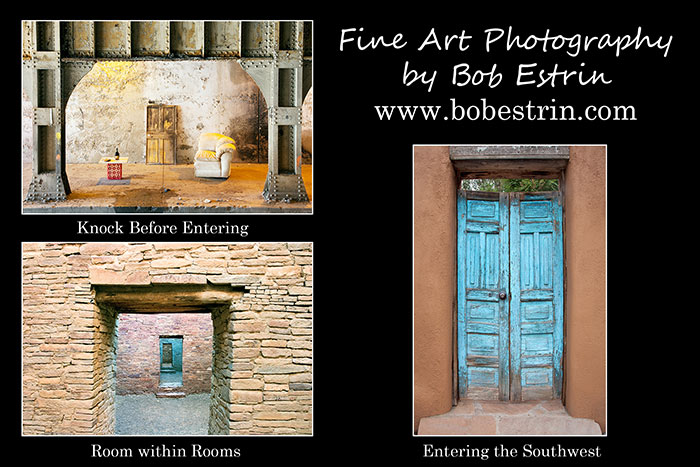
Artists handle business cards in different ways. Someplace them in the front of the booth that is easy to find and take. Other artists may place them within the booth area but in a section more inside the booth in which a more serious customer looking for a business card could find. I see the artists at the higher-end shows sometimes have business cards in the back out of sight and supply business cards to the customer upon request. This has the advantage of having the customer requiring a brief personal contact with the artist to receive the card.
Although it is unlikely that people who take business cards will contact you later, it does happen and the cost of business cards is so small that I feel they are worth having. Having a well-designed business card also has a more professional look. I recommend that your business card have more of an artist look and can have one of your art images or a custom business logo on it. Some business card information you may include is the artist’s name, business name, business address, website, email address, and phone number. In my case, I have all this information on my website’s contact page. If you feel that many of your customers do not use the internet, then I would have a phone number on the business card.
Many places from local print shops to the popular Vistaprint can print business cards for you. If you go the online route, I recommend getting on the mailing list first so you will get discount offers before ordering. The more business cards you purchase at the same time, the less expensive each card becomes. One suggestion on business cards is to not have both sides coated unless you are having print on both sides. If you only coat the text/image side to give it a glossier look and leave the blank side uncoated, you will be able to write on the blank side. It is nice to use the blank side of the card to write down for the customer the title, sizes, or prices of the art pieces that they are interested in for later referral.
For an artist, I do not think that the pre-designed business cards that you can choose for free at these sites and just add your contact information will be best since artists should show in their business card that they are creative and have custom looking cards. If you just want to get some business cards starting out and use a more basic card design, that is fine but for the long term, I suggest a more impressive business card.
What should I do? I used to have business cards, but now I produce 4×6 photo prints at Costco that act as my business cards. I have some set forms that I add 3-4 photos on and the customers seem to like them. At this time, I have five different versions with different themes such as landscapes, doors, or cars and if a customer is interested in a particular subject matter in my booth, I give them a related theme card. You can see an example of one of my cards here. I tend to change out my card images every year and see them as more of a trading card that customers who visit me often may collect.
I do not always wait for a customer to pick up a business card. If a customer seems serious by looking at many of my images and taking their time but not ready to purchase at that time, I will offer them a business card by handing one to them as they are leaving the booth. The artist should not give a business card to the customer without the customer asking for one until the artist is sure that the customer is not going to purchase at that time and is leaving the booth.
Another reason to have business cards is if you have an exhibit in a public place such as a library or store. Having business cards available is a way for customers to take some information home with them to be able to contact the artist. Business cards are also handy to hand out to fellow artists or others as part of your normal artist business activities.
Another alternative option or addition to handing out business cards is to offer to send the customer an email showing the art they are interested in. If the customer is interested in a specific image or seller item, ask for the customer’s name and email address. Then send out later that day or the next morning an email to the customer including the following information.
1. Thanking them for visiting your artist booth.
2. Perhaps something personal that you talked about.
3. Include the image or images of artwork or item that the customer was interested in. These should be inline images and not as attachments if possible.
4. Artwork or item information such as title, size, and price.
5. A closing statement to contact you to further discuss or purchase. Include your contact information.
Do not be afraid to resend a similar email out a few weeks later. Having an interested customer’s email address can also be used to send invites to future art shows.
Custom business cards from Vistaprint are available through Amazon. Prices are reasonable with quantities of 500 or 1000.
Web Sites:
I feel that every artist today should have a website or web presence. You can put your art on-line at many sites such as www.fineartamerica.com and many more without needing to know much about computers. If you do not know how to create high-quality digital files of your art, you can have someone scan or photograph your art that will be used to upload to these sites. Many of these online gallery sites will even make a print from your submitted digital file and fulfill the order by sending the print directly to the customer for you.
There are many of these art-related website galleries around and many are free to display your art. Others may be free but charge you a fee if you sell any art. Some of the more sophisticated sights may charge a monthly fee, just to display, depending on how many art images you have in your own personal gallery. These sights may look more like your own individual website and not just one more artist grouped into a large group of artists. There are many choices to choose from and no reason you cannot select more than one.
If you can manage your own website or pay someone to do this for you, it is always best to have your own website for flexibility and customization for your specific needs. When you sell off of your own website, you do not need to share a commission. Most commercial websites are geared to selling original artwork or a photography print of one size. They do not handle multiple-sized prints which are best for photography or painters wanting to sell prints besides the originals. With your own customized website, you can display multiple print sizes and prices such as I do
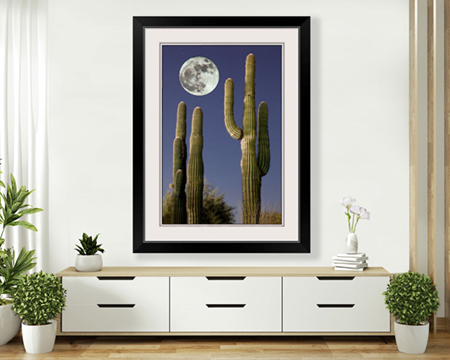
Another advantage of having your own website or multiple gallery websites is that many online gallery websites have been going out of business and all your hard work setting them up is then gone. For this reason, always keep a copy of all your digital art files on your computer for later use. I have my art on my own website www.bobestrin.com and also on a variety of other online gallery sites that bring in additional views of my artwork. On some of these other websites that may have only 3 -10 images shown, I then list my own personal website for customers to visit to view additional art images.
Artists can use their website to market future art shows. I have a specific web page on my site just for this. I list the event, date, hours, address, and show website and contact information if available. This information, if done in advance, can be picked up by search engines. Recently, I have started to send out tweets on Twitter about my art show events as well as other art-related events and new images. With Twitter, you have a limited number of words you can use so I give a link to my website’s www.bobestrin.com/shows.htm page to show more detailed information about the art event if they are interested. While I do not use Facebook myself if you do this can also be a powerful marketing tool to promote your art and events.
The website is also a good place for customers to look up more information on you as an artist. I have a page that shows articles that have been written on my art, a page that lists my past exhibitions, and a page that lists an artist statement/bio and general information about the artist. I tend to think of my website as an online resume/portfolio and not just for selling my artwork.
My experience is that websites will not bring in sales that often but when they come in; tend to be much larger orders. A website is also a good place for Interior Designers to find you as well as an online portfolio for people to review that may want to exhibit your art. A website has many benefits beyond its sales potential.
Be careful of large or strangely written email order inquiries that you get from people looking at your website. Most of them are just people trying to scam you using email. You will start to recognize them easily once you get a bunch of them. You can read the article How artists can protect themselves from internet scam orders for more information and examples of scam emails I have received.
Labeling / Artist Bio or Artist Statement:
For most artworks I find that the title and price are 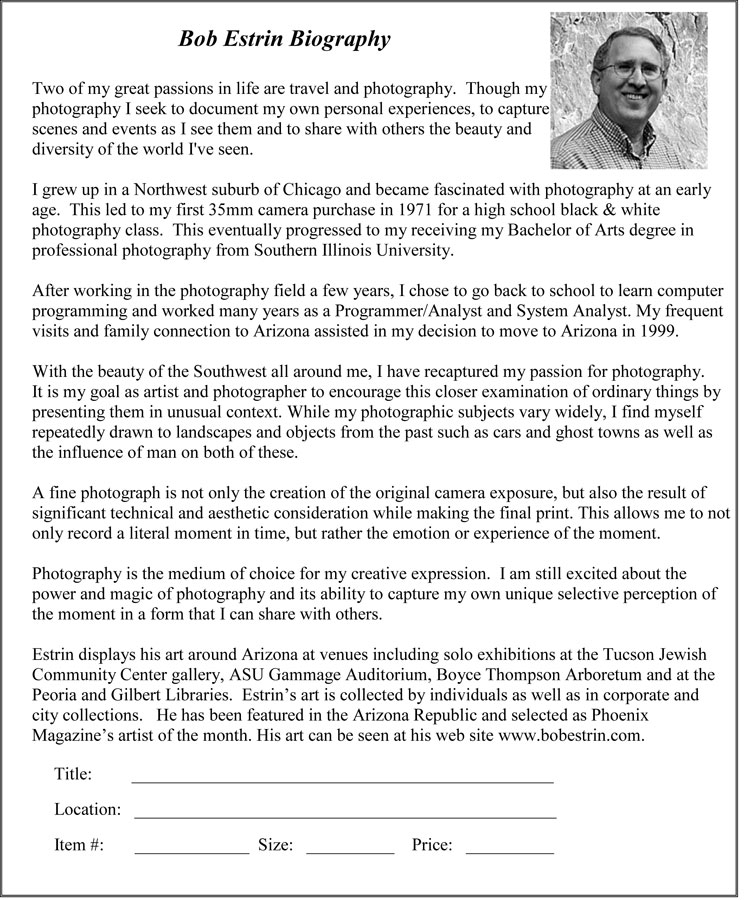 always needed with size as an option. For photography, many customers want to know the location of the subject matter.
always needed with size as an option. For photography, many customers want to know the location of the subject matter.
For painters, as a customer, I prefer a label that says if it is an original or print/Giclee especially if the painting is printed on canvas or framed. It also is nice to list on the label the more specific painting type such as watercolor, acrylic or oil since not everyone is as art knowledgeable as the artist.
Many artists place a printed page of information about themselves such as an artist statement or bio and a small artist headshot on the back of the matted artwork.
I see no reason you can not do this on original or framed artwork also. Customers seem to like this as I see them turning over the matted prints looking at the additional information.
This artist bio/artist statement page also gives a stronger bond between the art piece and the artist which helps in an overall stronger relationship between the customer and the artist. As I have said before, the customer is not just buying the art but also part of the purchase is related to the connection to the artist.
With a picture of the artist on the bio, it helps the customer relate and recognize that the artist is in the booth. To my surprise, many customers do not always understand that most of the time, the artist is the one in the booth. One of the most asked questions I get is “Did you take these” or “Are all these photographs yours”.
I place a business card in the packaging of every order I sell. I also have a stamp with my name and website that goes on the back of each matted or framed print. If they wish to order another piece of art in the future, I try to make it easy for them to find me. My website is also my name and will come up on top during a web search of my name.
Limited Edition Prints:
This is up to the artist to decide whether to do this and to define what they want their definition of a limited edition is since many artists do it differently. A few of the larger nationally known art shows require limited edition prints to participate in that specific art show.
Some artists are very sensitive on this subject and either are very for it or very against it. I just chose not to do it anymore.
I personally do not think it is a good idea and worth the paperwork for most artists to keep track of for photography for the art show market. I have never had a customer tell me he was not going to purchase a piece because it was not a limited edition. To me, it is more of a gallery marketing thing and since photography prints can now be duplicated with exactly the same quality when printed in bulk or at a later date, I am not sure it applies to the original reason for limited edition printing. For some States such as artists selling in California or New York, more specific rules are set up for limited edition paperwork and should be reviewed.
If you sell photography to more of a serious collector’s market or through an art gallery, I can see a benefit to selling limited edition prints in smaller editions. Some photographers limit their editions to smaller amounts such as 15 -50 prints per image. Many times, these smaller edition prints are much more expensive to purchase and maybe each individually hand done such as in a darkroom or using an alternative photography process.
When I first started, I did have selected prints marked as LE of 100, 150, or 250. When reality hit and I saw that even if I had a popular print, it would sell in such a high number to reach my edition numbers due to the limited amount of shows I did. Because of this, I decided that limited edition numbers were not for me. I have seen an artist put very high LE numbers such as 1000 or higher and I wonder if it is really limited to those numbers. You should always stick to what your limited-edition agreement was in your printed statement for those artworks sold under a limited-edition agreement. I see very few artists selling limited edition prints at art shows nowadays as compared to what I saw in the past. It is really a personal choice for the artist and in some mediums such as bronze sculptures, it could be the norm.
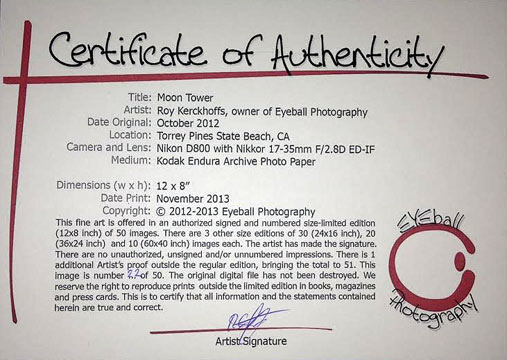
Certificate of Authenticity:
Some artists do place a sheet called a Certificate of Authenticity on the back of matted or framed prints. In addition to the artist’s name and contact information, the certificate may also give print information specific to that print such as art title, size, a special type of paper it was printed on, the ink used along with the artist’s signature. These are similar to what would be on a limited-edition certificate without any edition size listed.
Shown to the right, you can see a sample COA from California photographer Roy Kerckhoffs. Some States require COA with your prints and you should determine if this applies to you. A few articles with additional information on Certificate of Authenticity can be found here in article one Some examples of COA can be seen
here.
Some artists print these out on fancier certificate colored paper with nice borders that adds a personal touch and value to the artwork. Here are some samples of Certificate Paper which can come with a fancy border. I use an ivory colored 110 lbs. thick card stock paper, shown below, that I purchase at Staples and can print two to an 8 1/2 x 11 sheet.
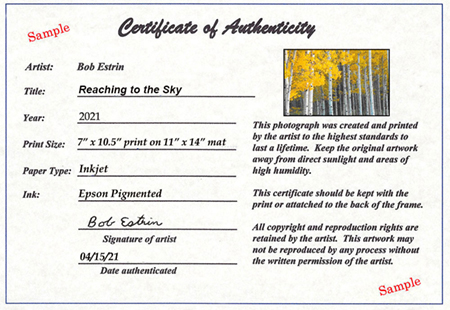
Shown is one of my COA sheets which is printed on thick 110 lb paper. I have a slightly different version for my vertical and panoramic images. I give this COA sheet filled out to the customer when they purchase a photograph of any size or type. I used to not have a COA for my matted prints but have changed to give out COA for any purchase to make things consistent.
Signing of Prints: (Or not signing your art)
I have visited numerous indoor group photography exhibits, not art shows, that do not have the artist’s signature showing on the front of the prints or mats so that it is visible. At these photography exhibits, the artist’s name is displayed on the accompanying art title card. This is now becoming very common with the reasons I have been given by photographers is that the signature distracts from the viewing of the art. This reason does not make sense to me but I have heard it multiple times. For me, adding an original signature of the artist to the artist’s artwork is traditional and also serves a purpose that is not distracting. I originally said a few years ago in this article “What’s next, are the painters no longer going to paint their signature on their art”, but since then I have seen this with different painters.
On my recent trip to California, I saw some paintings without a signature on them at a few different small galleries. These are mostly young artists and the artist tells me that their teachers are telling them not to sign their paintings since it distracts from the art. I do not understand this trend since when I see paintings in higher-end galleries or museums, they seem to be all signed. I have never heard a customer complain that the signature distracts from the viewing of the art. I hope these artists are placing their names on the back of the artwork.
I personally do not understand this trend, since if I ask a customer if they would like one of my photographs with an artist signature on the mat or not, I would think close to 100% of customers would want the artist signature. I feel that the artist’s signature should display in some manner from the front either on the print or mat. I now additionally sign the back of the photographic print, in the white border area, with an archival thin line pen even though this artist’s signature does not show when displayed. The reason for this is in case the photograph has its mat replaced in the future, the artist’s signature is still associated with the print with the idea that the artist personally approved this print and this is not a later reprint.
Now that I said my viewpoint, I sometimes do not sign some of my photographs under certain conditions. When a quantity of larger-sized prints is ordered for a commercial client and they are framing themselves, I will ask them if they want the photographs to be signed. If they do, I will pick a place in the lower right image area that the entire signature will show up on, such as in a lighter area. I also do not put the signature at the very bottom of the image, so the framer does not cover part of the signature up with the matting. I also drop ship my larger canvas prints directly from the printer to the customer since postage twice of a 32″ x 48″ canvas can be expensive and I do not want to pass these costs to the customer. In both these situations, if the customer does not get a signature on the front of the art piece, I send along with a separate printed Certificate of Authenticity of each piece of art that has the artist’s signature on it. The customer can then attach the certificate to the back of the wrapped canvas print or for prints, to the back of the frame. While I do not currently add a digital signature to my art, this would be one way to handle these situations.
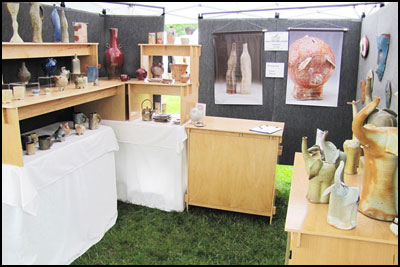
For painters, in addition to the artist’s signature, I see some of them paint a copyright symbol and date on the front of their paintings. I personally think having a copyright symbol on a painting is unnecessary and I see no purpose for this. You already own the copyright by painting the art piece. Most buyers of artwork understand that they are only purchasing the artwork to display as art and the purchase does not include any other rights to copy or reproduce the artwork for any reason.
On the subject of painting a date, of the painting creation year, on the painting front, why would painters do this?
If a buyer sees a painting with a date 5 years old, they may not buy it even if they liked it because they may feel that the artist could not sell it before over numerous years and wonder what is wrong with it. Never give a buyer a reason to not purchase your painting. If you must supply this information, place the date on the back of the artwork as information for those that value this information such as museums. The wood bars or paper backing makes a great surface to add this information.
Art Show Lighting:
Some shows will be at night and lighting is required. Many times, new artists do not think to bring lighting and show their artwork in the dark or with a flashlight. If a show is going on after sunset, you should ask if they will be providing electricity. If they do provide electricity, ask them if there will be an additional charge.
You will need to bring lights, a Power Strip with a surge protector and phone charging slots and extra extension Cords. I also bring extra bulbs in case one breaks. Many smaller shows do not supply or offer electricity. Most shows will not allow generators since they make a lot of noise. I have a simple system for power that consists of the following items. One item you may need is a 12v deep cycle battery or marine battery or AGM battery that you can purchase locally. Power Inverter with 2 plugs (12-volt battery to 120-volt plugs) and lights of your choosing that use CFL or LED bulbs. The power inverter should also have a charging option for your phone. Optionally you can purchase a Battery Box which makes it easier to transport the heavy battery with a strap handle. You would also need a battery charger that charges deep cycle batteries (AGM 12v)and also your 12v car battery so it can be used for both when needed.
Different 12v deep cycle batteries have different amounts of power they can store such as 35ah to 100ah batteries. It depends on how much you want to spend and how much power you need to get you through the entire art show. If you get a battery that lasts longer, you may be able to avoid bringing the heavy battery home to charge each night. Batteries are heavy so you would need one with a handle built-in or purchase a battery box that fits your battery, to carry it around in.
Deep cycle batteries are different from regular car batteries, so do not get the wrong type. One battery option is to get the sealed type that you do not have to check to see if they need water and then fill them from time to time. Also on batteries (non lithium), it is best not to drain them over 40-50% of their power or you can lose some life of your battery. You can buy batteries at various local stores.
The bottom selection shows some sample items but Amazon has numerous choices. Many of these items can be used for home use also.
The compact flash bulbs put out 60w of light but use about 15w of power. One charged marine battery will run 6-10 lights the whole night but you do need to remember to charge the battery before the show. I also find lights with an arm that has a large clip on the end very useful (Clip Lamp with Adjustable Arm Link). You can attach these to many areas of the tent on the bars or a table edge and point them to light up specific areas.
When choosing CFL or LED bulbs, you now have the choice of selecting bulbs with the color temperature that your art looks best at. Some CFL or LED bulbs put out light similar to regular incandescent bulbs with others looking warmer or daylight balanced. The LCD bulbs used to be expensive but are now cost-effective when you need to draw minimum power from your battery. I recommend using the LCD bulbs.

The picture shows the color difference between daylight 5000k lighting on the left side and soft white 3000k lighting on the right. The Kelvin (k) color of your lighting can affect the color of your product on display.
I have seen so many different lighting methods from ineffective Christmas lights, flashlights, and candles to well-designed lighting arrangements. I suggest you check out some nighttime local art shows and see what other artists are doing. If your booth is lit well and other booths near you are not lit as well, the customers may be more attracted to your booth like moths to a flame.
Note: If you have an art show-related question for an artist at an art show, the artists are usually very helpful and will share their experience with you. If they have a customer, you should let them help the customer before continuing your questions with them.
Unsold Matted Prints and What to do with matted prints that do not sell:
How I handle matted prints that have not sold: I currently have three sizes of matted prints and refer to my 11 x 14 mat size here in this example. I currently carefully take the prints out of my 11 x 14 mats that have not sold for a while. The actual image is 7 x 10.5 being printed on 8 x 12 photo paper. I then reuse the old 11 x 14 mat (top and backing board) by placing a new print image in the mat and protect it with a new 11 x 14 Clear Bag. I use archival double-stick tape to hold my mats together and it is possible to just run your finger between the two parts of the old mat and separate the two pieces without harming the mat. Since the cost of the mats is more than the actual print image, I can save a lot of money by reusing my older mats that are in perfect condition.
I used to write, with a pencil, the image title on the lower-left section of the mat below the image. This caused a problem in which I could not reuse the mat with a new image so I no longer do this. I now have the image title on the Bio information sheet on the back of my matted prints. I still have my signature on my mat fronts but that only limits the image replacement to be of the same vertical or horizontal format.
What I do with my old removed prints: In this case, the outside photo paper dimensions are 8 x 12 with a 7 x 10.5 image showing with a white border. I ordered some Clear Bags in the specific size of 8 x 12 and also ordered some 8 x 12 mat backing board. I simply take the Clear Bag and put it on the backing board and print and seal the bag. I place these prints in a separate bin and sell them for $19.95 instead of the matted version which sells for about twice the price.
I find that this helps sell my older prints and also gives the customer, on a lower budget, another price point that might work for them. You can also use this method of selling prints with no top custom cut mat and just a backing board and Clear Bag for odd-sized prints such as panoramas or just larger prints such as 16 x 20 size or larger. Some customers purchasing larger unframed prints would be interested in handling the framing themselves.
Customers photographing art at the art show:

I recently had someone ask me about customers photographing the artwork at art shows using cell phone cameras. While this was asked by a photographer, some of the same would apply to other mediums. I rarely see photographers put up a no photography sign but I do see it on other booths for painters and other mediums such as jewelry. In my opinion, the bottom line is that I think that it is rude to take a picture of someone’s artwork without first asking permission.
Photographers may have concerns that the customer may want to print out a photo to place on their walls and painters, jewelers and others may feel the customer may be stealing their ideas or designs.
Many artists have their artwork online where anyone can copy the image but are more concerned with people taking photos at art events.
As for cell phone cameras taking images of your artwork, here are some reasons not to worry so much.
1. The matted prints are behind plastic and framed prints are behind glass which will reflect or blur some of the images.
2. They are also usually photographing at a steep angle and not straight on or from a distance which will not give a good result for printing purposes.
3.
Cell phones will not give most people the quality they are looking for in a “Printed” print when photographing other people’s art.
4.
A cell phone image is not usually taken to copy or steal a print in my opinion. It could be a way to just remember the moment such as one does when on vacation.
5. The people who take photos are not your buying customers and you do not really lose any sales. At best, they are taking the image home to determine if they like the image to purchase it later.
So how do I handle this situation? Sometimes my reaction is based on who the customer is and how they are taking the photo.
I generally do not do anything, but on occasion, I do ask them not to photograph the artwork mostly as an art education thing if I see them taking a second photo.
If they have a higher-quality digital camera and I see them taking a photo, I may ask them to not photograph the art. One thing the artist can do is offer to email them a photograph of the art pieces they are interested in if those art pieces are already available on a public website.
I see some painters put up a sign on the art show walls such as “No photography”. This wording would not make sense for a photographer to do, but other wording such as “Please do not photograph the artwork” may work. With a sign or not, people will on occasion photograph your artwork because they did not see your sign or do not know it is best to ask permission from the artist first.
One painter I saw had three small signs on her walls of a camera with a red line over the camera to state no photography. She did not appreciate it when people photographed her paintings. Her viewpoint was that she sold notecards of her paintings and that the customer could just purchase them.
Customers handling art roughly:
With my matted photography prints in my print bin, I see customers handle the prints very roughly. I understand that this is not a museum or inside a gallery setting, but customers should treat the art with respect and not do anything to damage the work. I feel that many customers feel that the very thin plastic sheet that covers the matted prints protects it under all conditions. The customers tend to take their nails and repeatedly tap on the image area or take their nails or fingers and rub up and down the image area when pointing out different image sections. I recently showed some of my matted prints to a gallery and she was leaning on the counter with her hand pushing down with her weight on it on the image areas of my matted prints and this was a gallery owner.
I am not sure why this happens so often. Years ago, I put some small signs on my print racks but had no effect. Now if I see a customer really pressing hard or using their nails repeatedly on the image area, I nicely ask them to handle the prints by the sides which is the mat board area. That usually makes the point that the customer understands.
Licensing / Sales Tax:
Most cities want you to pay for a tax license even if you only do business in their town for a few days a year. This license varies per city but is in the $50 – $70 range a year. You would fill out the paperwork and send a check to the city every month. If you have no sales for that city that month, you still need to send in the paperwork with a zero’s sales number. Once you have been doing this for a year or two, the city may let you fill out the paperwork every quarter for small sales amounts.
Some cities do special arrangements with small art shows so you do not have to pay for a whole zero’s license for a one-time event. Most towns have temporary event permits that cost less than a yearly license that will last the duration of the art show. If you wish to do a single show in a town, call the town and inquire about a special fair license, its costs and how long it lasts.
I would like to do a single or a few local art shows in different cities in my area but I do not find that it is worth it to do the paperwork for a year and perhaps pay $50-60 a year per city in fees for doing 2 shows that maybe only cost $50.00 to participate in with low sales possibilities. I feel that I need to just pick one or two cities per year and stick to shows in those areas. When I show in galleries or art exhibits in other cities, that business collects the sales tax for me and I do not need to have a city license for each of those cities. This allows me to exhibit and sell my art in a wider area without the need for multiple business or tax licenses.
I do not recommend including sales tax in the price, but in States where this is allowed some artists do this.
See your tax advisor for further information.
Bob Estrin
Feel free to enter comments (without links). The last 10 comments will be on display with the option to view previous comments if you want.
HTML Comment Box is loading comments…
Articles for artist:
1. Selling your art at an art show
2. The artist relationship with the alternative art gallery and artist/gallery contracts
3. The artist reception – A social event or a business opportunity
4. Artist printing photography on canvas
5. DIY project on mounting metal prints to the wall
6. Printing photography on different surfaces and presentations
7. Internet password hints for a more secure internet experience
8. How artist can protect themselves from internet scam orders
9. Photography career paths for photography students
Articles for artist selling online at Amazon:
1. Selling your art or artisan craft on Amazon
2. Handmade at Amazon – New Handmade SPF seller fulfilled Prime program
Articles for photographers:
1. Cleaning your digital sensor
2. Photographing Antelope Canyon, Utah’s best slot canyon
Copyright 2012-2021 Bob Estrin
Feel free to link to this article from your website.
Bob Estrin Photography is a participant in the Amazon Services LLC Associates Program, an affiliate advertising program designed to provide a means for sites to earn advertising fees by advertising and linking to amazon.com.

